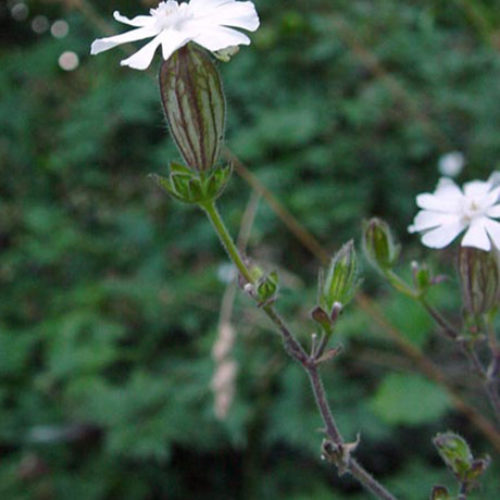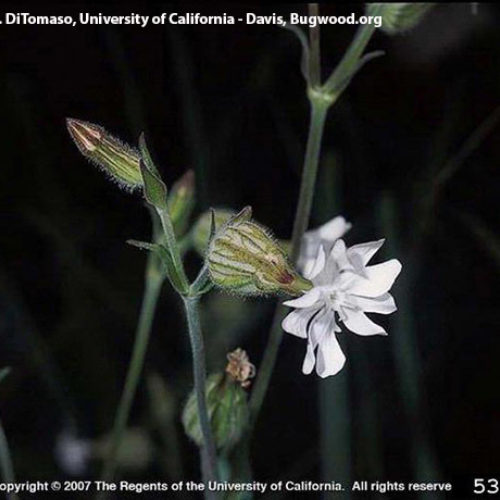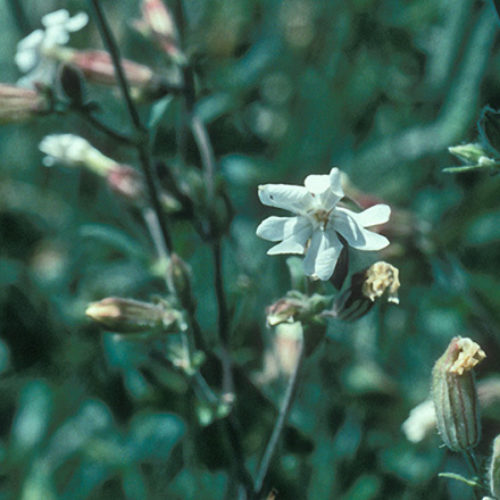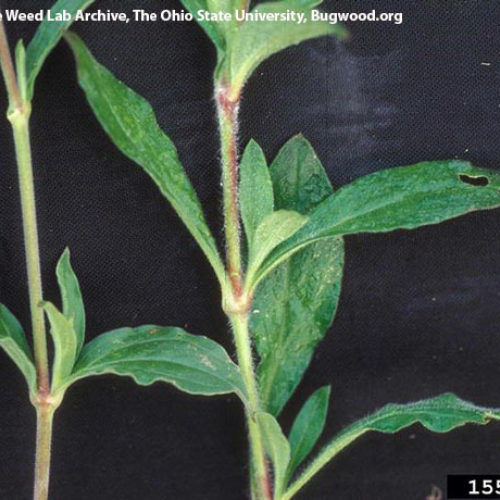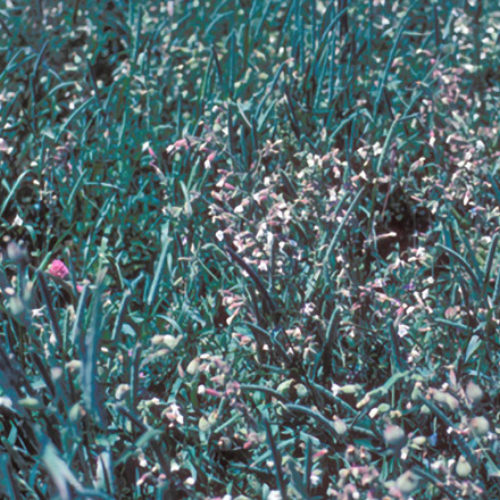White Cockle
Silene latifolia ssp. alba
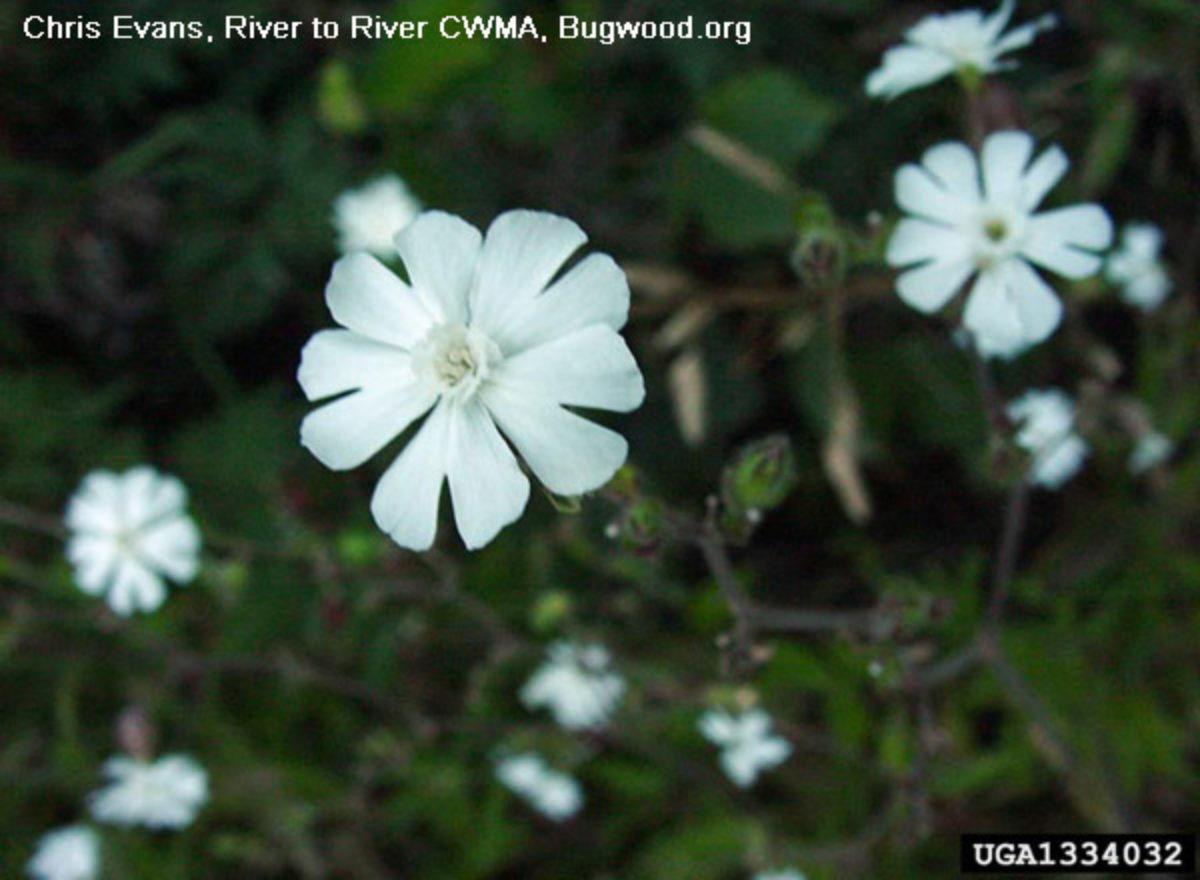
Family: Caryophyllaceae
Weed class: C
Year Listed: 1993
Native to: Europe, Asia and Northern Africa
Is this Weed Toxic?:
not known to be
Why Is It a Noxious Weed?
White cockle can be a serious problem in small grains, alfalfa, clover and grass seed fields. Its seeds are difficult to separate from commercially produced clover or alfalfa seed. White cockle is also problematic for Washington’s timothy growers.
How would I identify it?
General Description
It is a biennial to perennial plant that grows 1.5 to 3.5 feet tall. The plant is hairy on lower plant parts and glandular in the inflorescence.
Flower Description
It is dioecious, with male and female flowers on different plants. The fragrant flowers, which are solitary on long flower stems or in clusters, have five white or pink petals that exceed the sepals. Petals are deeply notched with tiny ears on the sides.
Leaf description
Basal leaves with leaf stalks (petioles), up to 3.9 inches long by 0.8 inches wide. Stem leaves opposite, reducing in size going up the stem and becoming sessile (without stalks, petioles).
Stem description
White cockle has hairy, jointed stems that can be spreading or nearly upright.
Fruit Seed Description
The small, rounded, rough seeds are produced in a bulb-like capsule.
Where does it grow?
White cockle is grows in grasslands cultivated fields, roadsides, pastures, grass embankments and waste places as well as many undisturbed areas. Pleaseclick here to see a county level distribution map of white cockle in Washington.
How Does it Reproduce?
It reproduces by seeds and short rootstocks. Since some plants only have male flowers, not all plants produce seed. However, female plants are capable of producing 1,600 to 24,000 seeds per plant.
How Do I Control It?
General Control Strategy
Based on information from Minnesota, white cockle can be controlled most easily in field crops when it is in the seedling stage or during seed germination.
Mechanical Control
Cultivation or tillage for regular seedbed preparation will kill many white cockle plants. However, well-established plants are usually not killed and tillage will promote seed germination.
Cultural Control
.
Biological Control
.
Herbicide Control
Please refer to the PNW Weed Management Handbook, or contact your county noxious weed coordinator.
For More Information
See our Written Findings for more information about white cockle (Silene latifolia subsp. alba).



